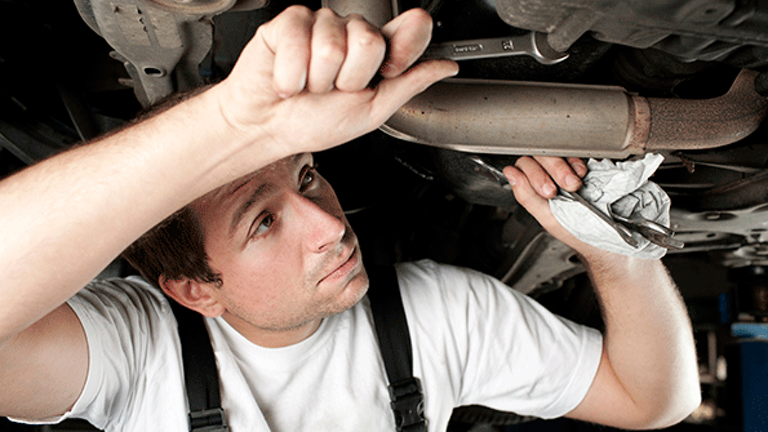
Do you want your car to always look and feel brand new? Then you should have a car maintenance plan.
It can be restricted to the routine engine oil and air filter changes according to your mechanic. Or it can encompass regular inspections and replacement of expendable items like tires or break pads.
Before we dive into the most interesting stuff, let’s first see a few benefits when your car remains in pristine condition:
- You can resell it at a higher price because there will be no evidence of depreciation.
- It saves you unnecessary repair costs in the future, and helps you stay accident free.
- It has a high-performance you can rely on.
Happy car, happy driver
It’s true that a weekly inspection of your car saves you a lot of money. Does this mean you will have to do the car maintenance yourself?
Yes.
Instead of waiting for the next routine check with your mechanic, try it yourself. It will be fulfilling to know the parts in need of quick attention and the ones that require more time before replacement. In other words, you will adopt a preventive practice of maintenance. This technique will protect you against major roadside emergencies and unnecessary costs.
Let’s now look into some simple ways to maintain your car.
- Perform regular engine maintenance. A well maintained engine means a high-performance car. Some of the things you can do to maintain your engine include doing regular oil checkups, replacing the air filters from occasionally, plus changing the fuel filters when necessary.
- Refill your gas tank as soon as it hits the ¼ mark. Don’t wait until the fuel level runs down all the way to the lowest level (Empty). Every time you deplete the fuel tank to exhaustion, it stirs up resting sediments underneath the car’s tank, forcing them into the fuel system. Contaminated fuel or lubricants clogs the fuel filters and injectors, downgrading the performance of your car. At worst, contaminated fuel can restrict oil, jam moving parts, and even shorten the fuel’s lifespan.
- If you see a gas tanker refilling the underground tanks at your station, it’s better to fill up another day. That’s because as the tankers refill the underground tanks, it stirs up sediments and debris, which can contaminate the fuel should refill at that same time.
- Inspect the steering fluid. The steering fluid is the most easy to check as it has a transparent, named reservoir. Make sure there is enough fluid otherwise you will literally have a hard time steering. Additional fluids to inspect include the windshield-washing fluid and the air conditioning coolant.
- Inspect your car for brake fluid leaks. If your car has brake fluid leaks, you’ll notice signs like the brakes feeling squishy. Your car could leave puddles of viscous fluid underneath when parked. Also, you could notice leaks in other parts of your car. Check for brake fluid leakages by ejecting the tires and having a good look under, at the wheel hubs. This will allow you to inspect the brake pads’ condition, too.
- Always change the brake fluid when it’s necessary to avoid running on contaminated fluid. If it is to be contaminated by only a small amount of grease, then its effectiveness in brake application is reduced. It is therefore important to first carefully clean the fluid’s reservoir exterior before opening it. The brake fluid should be on the half-inch mark. Top up in case the level is below. Change the fluid if you find that it’s too dark.
- Replace worn out brake pads. Experts agree that after every 40k – 50k miles, you should replace your brake pads. But that figure often depends on the driving style and conditions. Precisely, you know it’s time to replace your brake pads once they start making that squeaking or grinding noise. Another symptom is increased vibration and reduced performance when you step on the brake pads.
- Use quality oil filters. In these hard times, every Kenyan is looking for ways to save an extra coin. But when it comes to oil filters, cheap is expensive. That said, go for quality oil filters. This is particularly use if you drive high-end cars like sports cars, SUVS, and Sedans – not that you don’t need quality filter if you have a low-budget car.
- Avoid driving your car on an empty tank because you risk burning your pump out.
- Sediment, wear debris, wrong oil, glycol, and water can find their way into your engine. Beware though – of all the contaminants, solid contaminants are the most harmful. But Silica is the most destructive to your engine surface.
- Vacuum and furnish the underneath of the car with a coating or paint to avoid rust problems. Some car models, like the early Mazda models, are prone to rust, particularly on the under parts. The metallic parts of the vehicle will corrode the more they come in contact with moisture. You can prevent rust from building up by furnishing the exposed metallic parts with a coating. For the parts that have already rusted, you could scratch it off using a grinder or sandpaper.
End Thoughts
Car maintenance is the diligent way to increase your car’s lifespan. Strictly stick to your car’s manual. It’s the guiding authority that lets you know your car inside-out. Not your mechanic. So quit waiting for the memos on your dashboard to come on. But if they show, act quickly.


[…] Read more on Car Maintenance and why its important […]